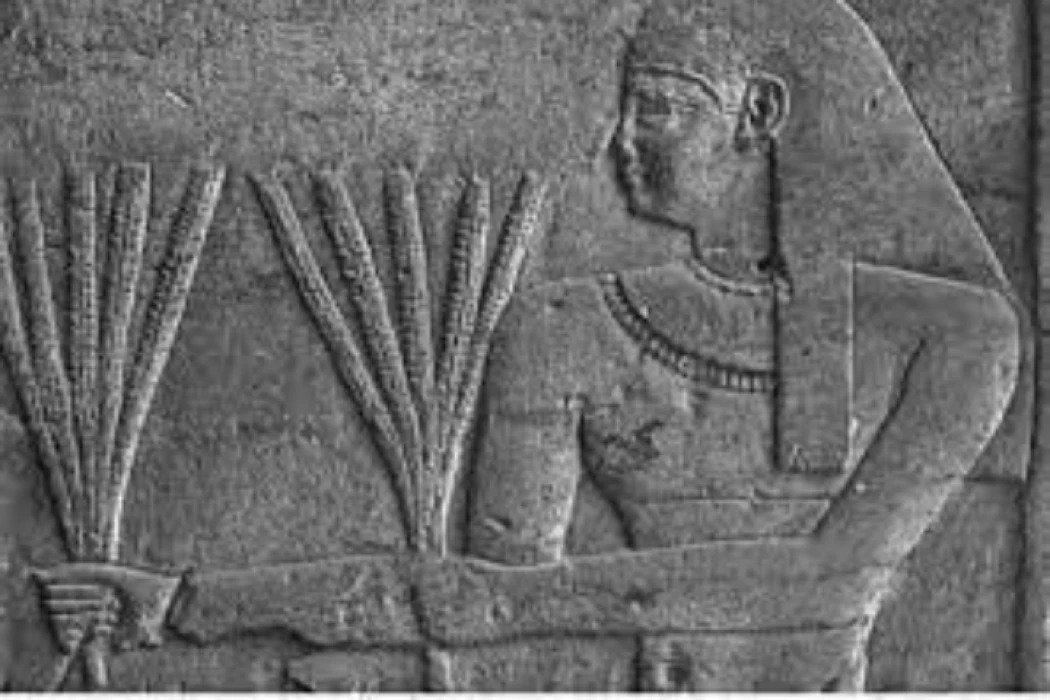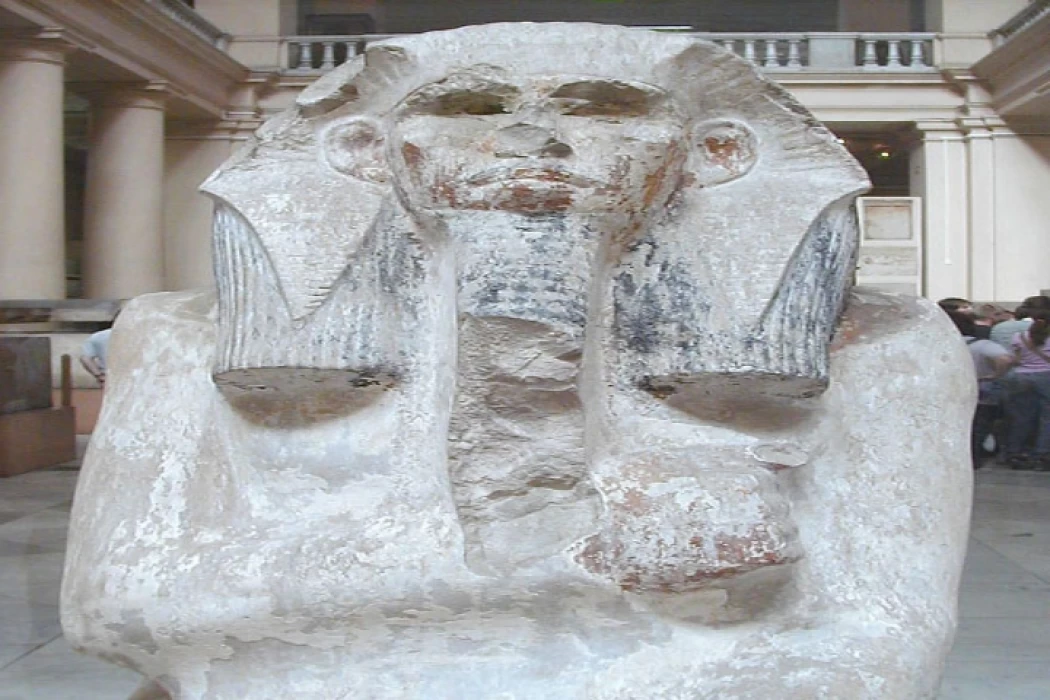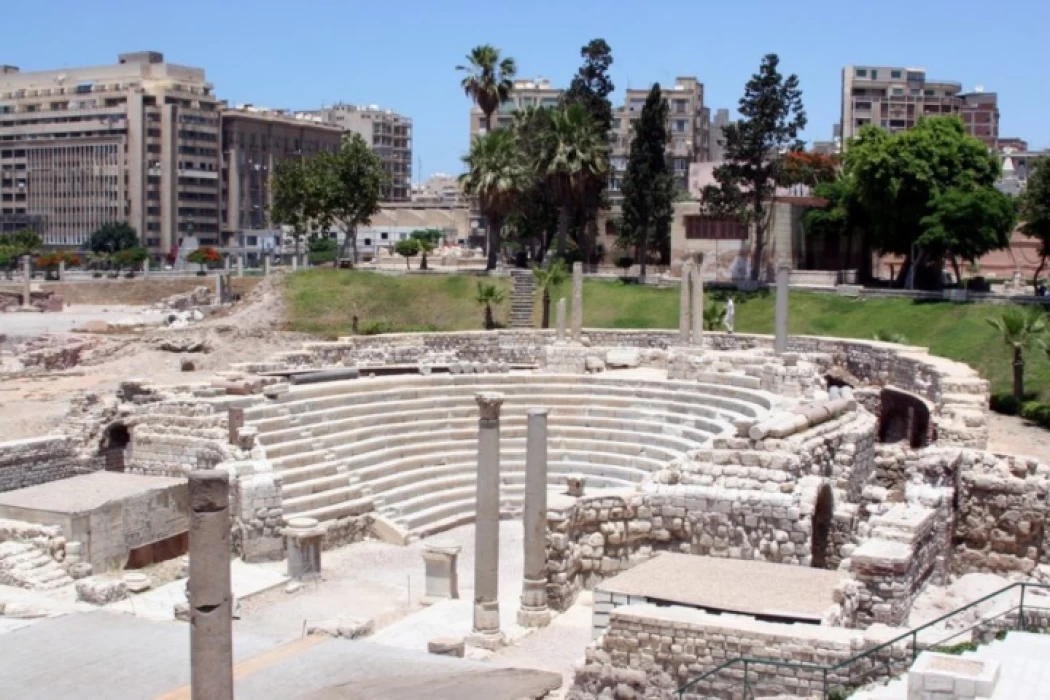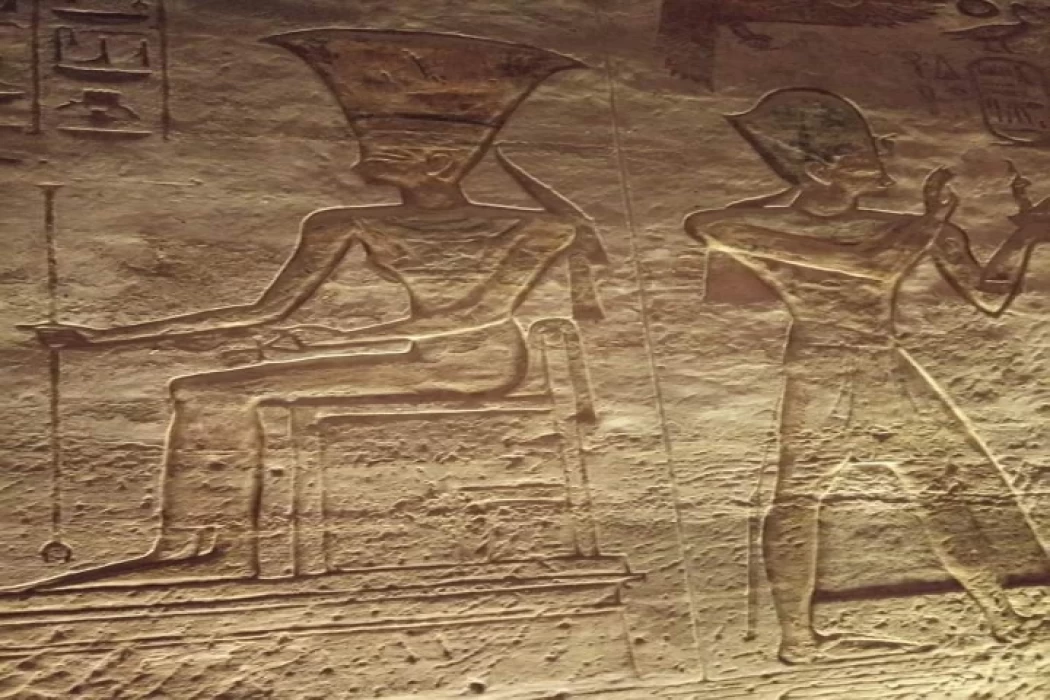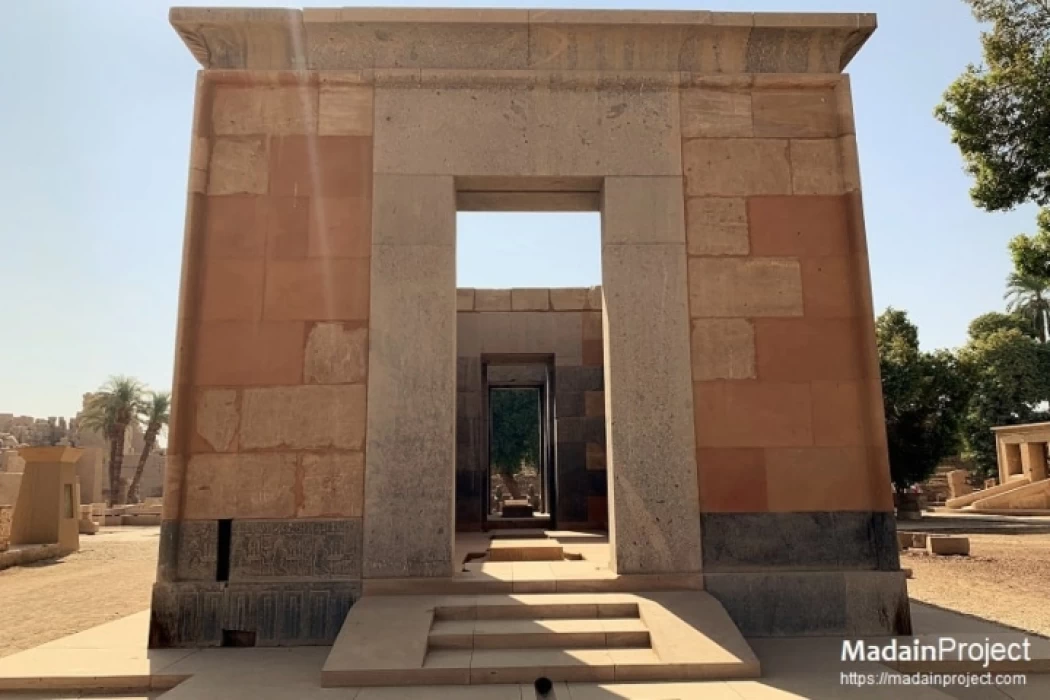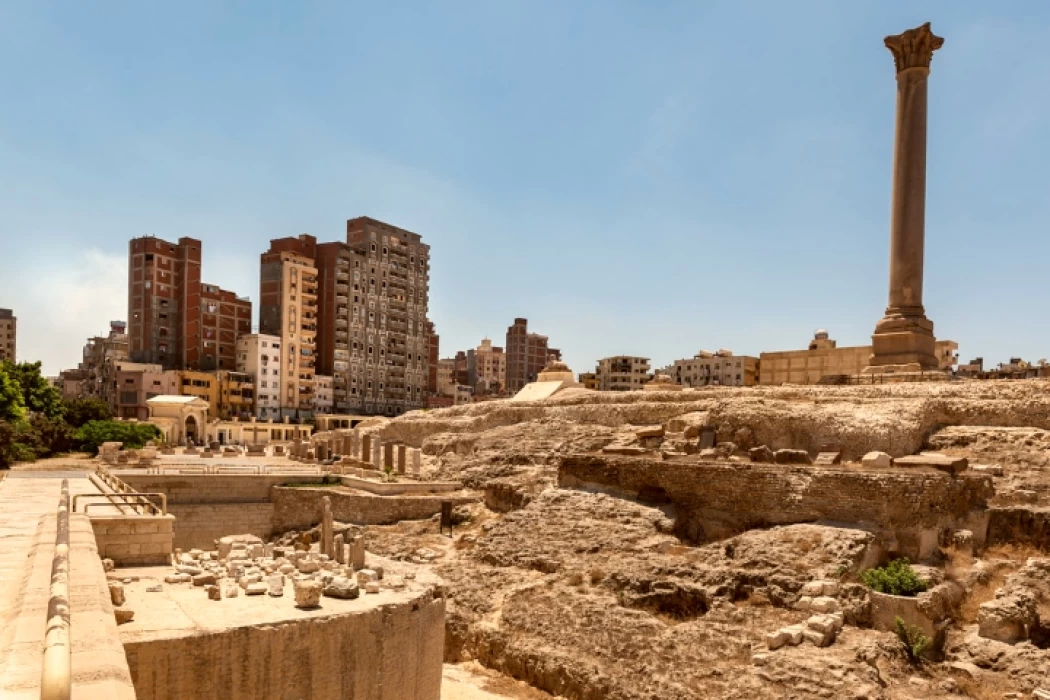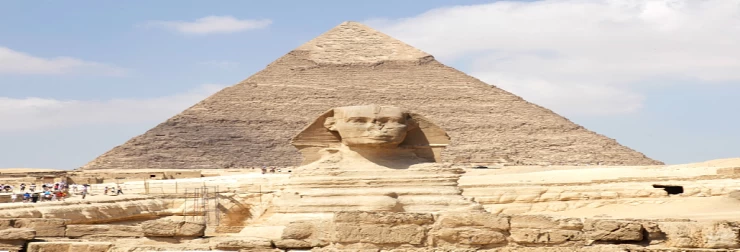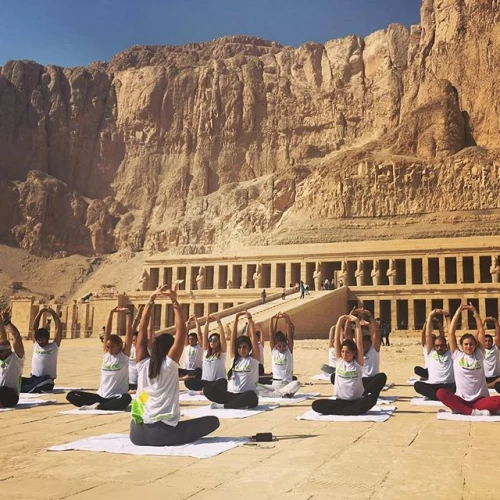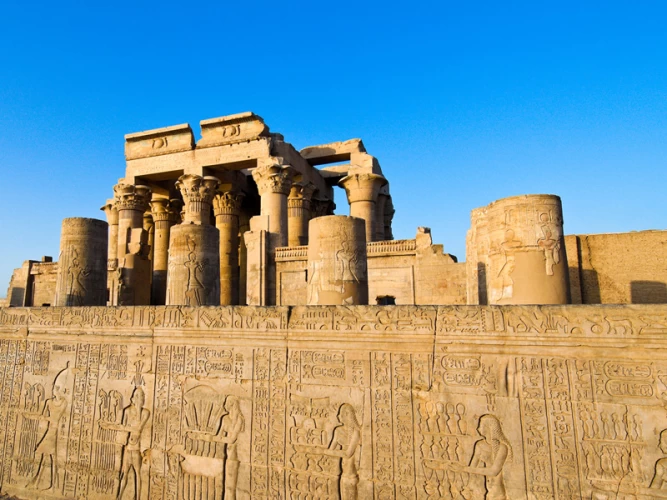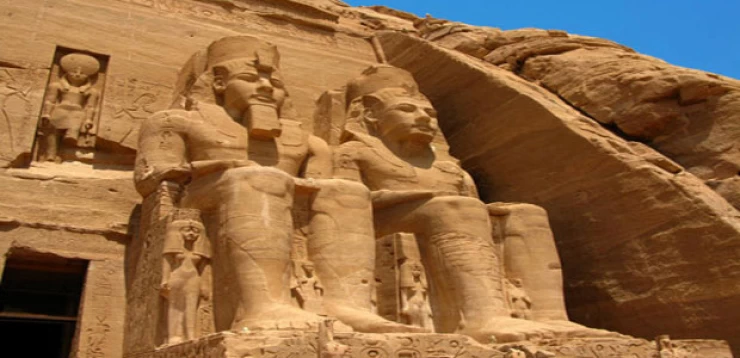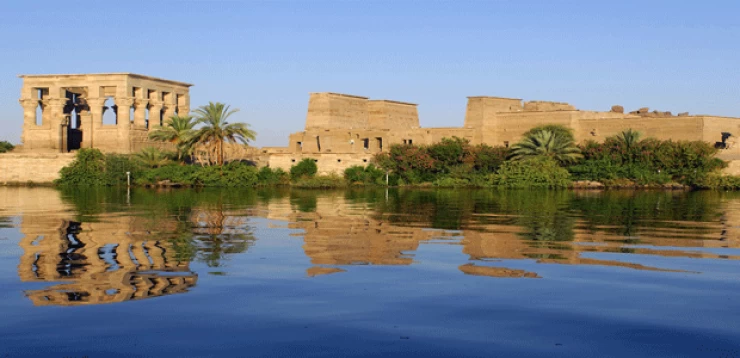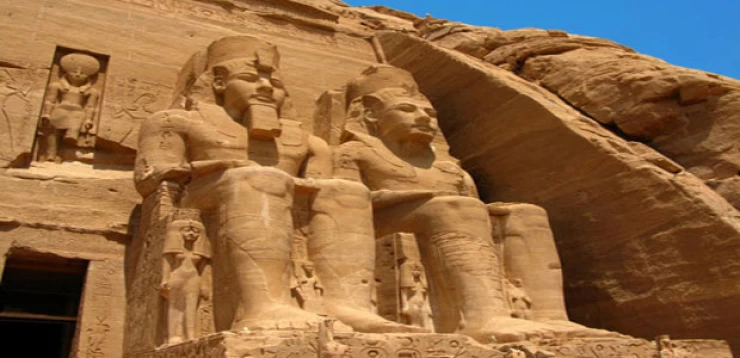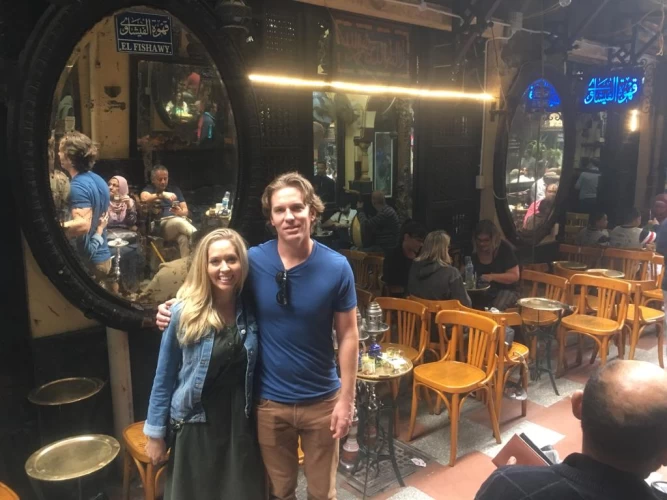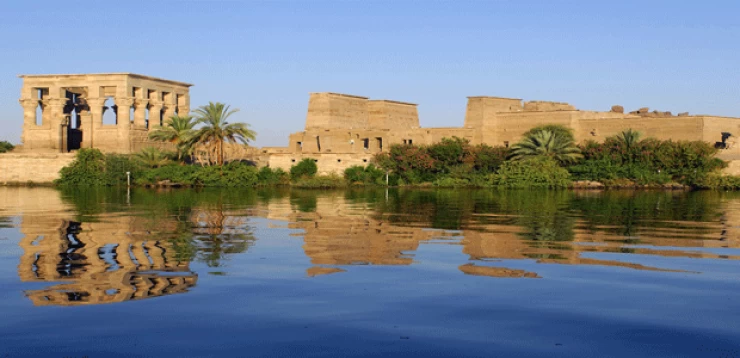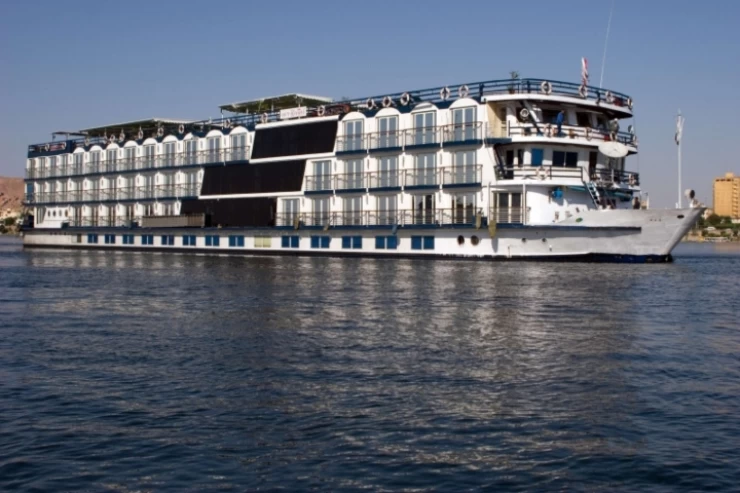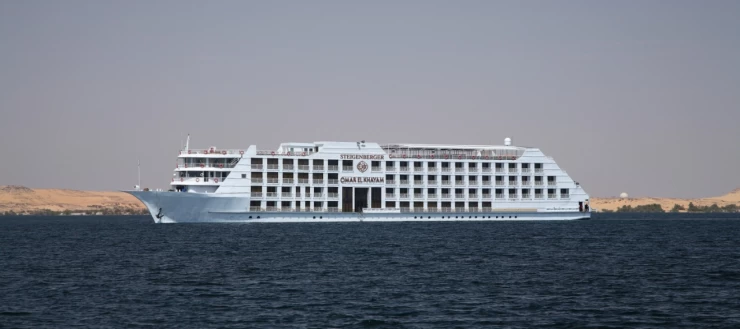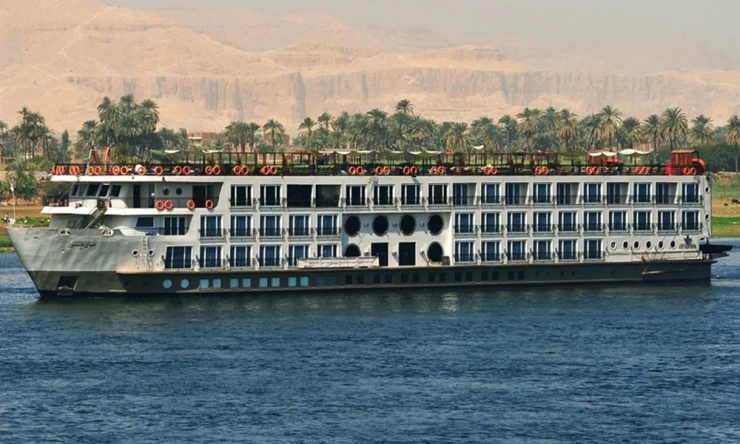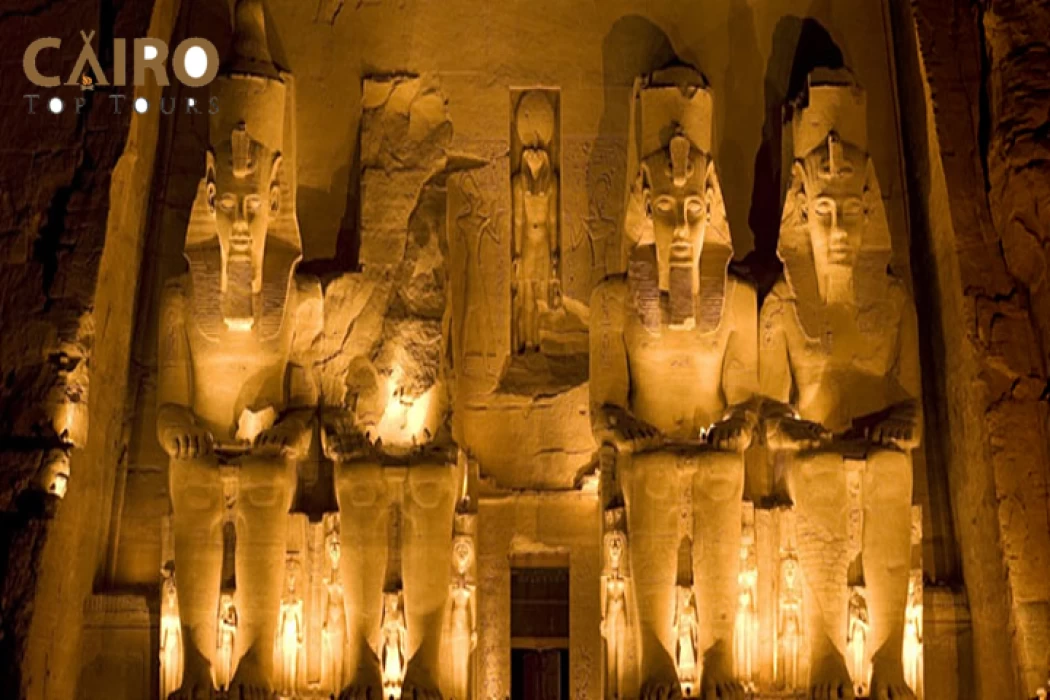
Abu Simbel Temples
Abu Simbel is an archaeological site located on the West Bank of Lake Nasser, about 290 km southwest of Aswan. It is one of the sites of the" monuments of Nubia " included in the UNESCO list of World Heritage sites. Which starts from the direction of the river flow from Abu Simbel to Philae (near Aswan).
The double temples were originally carved out of the mountains during the reign of King Ramses II in the XIII century BC, as a permanent monument to him , However, in 1960 the complex of facilities was completely moved to another place, on an artificial hill made of a dome structure, and above the reservoir of the Aswan High Dam.
During his reign, Ramesses II launched a massive construction initiative throughout Egypt and Nubia, which Egypt controlled. Nubia was significant to the Egyptians because it provided gold and other valuable trade products. As a result, RaThere are two temples: the great one devoted to Ramses II and the little one to his principal wife, Queen
Nefertari.
Mses constructed several magnificent temples there to impress the Nubians with Egypt's power and destiny. The most famous are the temples cut into the rock near the contemporary settlement of Abu Simbel, at the Second Nile cascade on the border of Lower and Upper Nubia.
The construction of the temple complex began around 1264 BC and lasted approximately 20 years.
The temples got sand-covered over time as they were abandoned. The statues of the main temple were then covered in sand till they reached their knees in the sixth century BC. The temple was lost until 1813 when Swiss orientalist J. L. Burkhardt discovered the main temple walkway. Burkhardt discussed this discovery with his Italian counterpart, explorer Giovanni Bellonzi, who also traveled to the site but was unable to dig an entrance to the temple. Belonzi returned in 1817, and this time he was successful in his attempt to access the complex. And he took everything precious he could bring with him. Tour guides at the site relate the name with The Legend of "Abu Simbel" particularly that there was a little local lad who led the explorers back to the spot early in search of the buried temple that he had seen in quicksand on previous visits. They eventually christened the temple Abu Simbel after his name.
An international fundraising campaign to save the monument from drowning began in 1959: the ancient southern monuments of this human civilization were under the threat of rising waters of the Nile River, which were about to result from the construction of the High Dam in Aswan.
The rescue of the temples of Abu Simbel began in 1964, and this operation cost 40 million dollars. Between 1964-1968, the whole site was cut into large blocks (up to 30 tons and an average of 20 tons), dismantled and reinstalled in a new location at an altitude of 65 M and 200 m above the river level, considered by many to be one of the greatest works of archaeological engineering. Some structures were rescued from under the waters of Lake Nasser. Convoys of buses and escorted cars leave twice a day from Aswan, the nearest city. Many visitors arrive by plane at the specially built airport of the temple complex.
The complex comprises of two temples. The largest is dedicated to three gods of Egypt at that time-Ra-harakhti, Ptah and Amun, and four large statues of Ramses II stand out in the facade. 1867) (urban rapporteur and consultant). Delimitation of the boundaries of the Awlad Al-shilih tribe, Batna District, No. 1351. The smaller meeting of January 23, 1867 is dedicated to the God Hathor, who was reincarnated as Nefertari, the wife of Ramses most beloved to his heart.
The Great Temple at Abu Simbel took over twenty years to build and was finished in roughly 24 years of Ramses the Great's reign (which corresponds to 1265 BC). It was devoted to the gods Amon, Ra-harakhty, Ptah, and Ramses. It is widely regarded as one of the most spectacular and gorgeous temples built during Ramses II's reign, as well as one of Egypt's finest.
Four massive statues of the Pharaoh, up to 20 meters tall, with the double crown of Atef for the sea and tribal sides, decorate the temple's exterior, which is 35 meters wide and crowned with a cornice with 22 baboons, and the entrance is encircled by sun worshipers. The huge statues were carved directly from the rocks in which the temple was located before it was moved. All the statues represent Ramses II sitting on the throne and wearing the double crown of the Maritime and tribal faces of Egypt. The statue to the left of the entrance was damaged in an earthquake, only the lower part of the statue remained intact. The head and torso can be seen under the feet of the statue.
Other statues barely higher than the Pharaoh's knees stand next to the massive statue's legs. This depicts Nefertari as the main wife of Ramesses, the Queen Mother Mutai, with two sons Amun-hershef, Ramesses, and with six daughters pentanath, pakhtamut, Nefertari, meritamen, nebtawi, and isti-nofret.
The entrance is capped with a low-relief inscription depicting two figures of the King worshiping the Hawk-headed Shepherd Harakhti, whose statue is housed in a huge niche. This God grasps in his right hand the hieroglyphs of the Egyptian Pharaonic art of writing user and a feather while holding in his left hand the goddess of truth and justice, which is no less than the plant of the giant Ramses II and the throne name Maat re. And, at the top of the building's front, there is a row of 22 baboons with their arms lifted in the air, purportedly praising the Rising Sun. Another remarkable aspect of the building's facade is a painting in which Ramses' marriage to the daughter of King Hatzile III is recounted, resulting in peace between Egypt and the Hittites.
The interior of the temple has the same triangular design that most ancient Egyptian temples follow, with a decrease in the size of the rooms from the entrance to the temple. The temple is a very complex and unusual structure due to the many side chambers. The hypostyle hall (sometimes called pronaus) is 18 meters long and 16.7 meters wide and is supported by eight huge ossified columns depicting the defiant Ramses associated with the god Osiris, the God of hell, and indicates the eternal nature of the Pharaoh.
The massive sculptures line the wall on the left, carrying the white crown of the tribal face, while those on the other side wear the double crown of the Maritime and tribal faces (pschent). On the bottom half of the pronaos walls, depictions of scenes from the ruler's military campaigns stand out. The statue depicts the Battle of Kadesh on the ASI River, also known as Syria today, in which Egypt's ruler defeated the Hittite ruler. The most renowned inscription depicts the King riding an arrow chariot, firing arrows at fleeing adversaries who are taken as prisoners. Other depictions depict Egyptian conquests in Libya and Nubia.
From the hypostyle hall, we reach the second hall, which has four pillars decorated with magnificent scenes of god offerings. Images of Ramses and Nefertari are shown with Amun and RA-harakhti's sacred watercraft. This hall leads to a central transverse atrium, which serves as the temple's entrance. And here on a black wall are bits of rock carvings of four seated statues. Ra-horakhti, the deified Ramses the King, the gods Amon-Ra and Ptah-Ra horkharti, Amon-Ra and Ptah were the principal deities of the period, with cult centers in Heliopolis, Thebes, and Memphis, respectively.
The ancient Egyptian engineer designed the temple's axis in such a way that the Sun's rays penetrate the temple twice a year, on October 22 and February 21, and the statue is illuminated and appears on the back wall, with the exception of the statue of Ptah, the God of Hell, which is always dark. It is said that these dates are the occasion of the king's birthday and, respectively, the day of his coronation, but there is no evidence to support this Of the Pharaoh. Indeed, according to calculations based on the solar rise of the star Sirius (Sothis) and inscriptions discovered by archaeologists, the date should have been October 22. This image of the King was strengthened and energized by the solar energy of the star, and the deified Ramses the great could take his place next to Amun-Ra and RA-horakhti The reason for the transfer of the temple, it is widely believed that this event is now happening one day later than it was originally.
The temple of Hathor and Nefertari, also known as the little temple, was built about a hundred meters to the northeast of the temple of Ramses II and was dedicated to the goddess Hathor, Ramses II, and his wife Nefertari. And in fact this is the second time in ancient Egyptian history that a temple was dedicated to the Queen. And the first time was when Akhenaten dedicated a temple to his wife, the Great Queen Nefertiti. The pieces of rock in the facade are decorated with two groups of giants, separated by a large gate. The height of the statues is slightly more than ten meters for the king and Queen. On the other side of the gate are two statues of the king, wearing the white crown of Upper Egypt (huge for the south) and the double crown (huge for the North); these statues are flanked by statues of the Queen and the King. What is really surprising is that for the first time in Egyptian art, a statue of the king and Queen would be equal in size
Traditionally, the statues of the queens were standing next to the Pharaoh, but they were no taller than his knees. This exception to a long-standing rule testifies to the special importance attached to Nefertari by Ramses, who went to Abu Simbel with his beloved wife in the 24th year of his reign. Also in the large temple of the king there are small statues of princes and princesses along with their parents. In this case she is in a balanced position: on the south side (in the left when she is in the face of the gate), from left to right, the Princes Meri Atom and Merer, the princesses Mert Amun and hentawi, the Princes rahirunmph, Amun her-khabshev, while they are located on the north side but in the reverse order. The design of the small temple is a simplified version of the large temple.
As the Great Temple is dedicated to the King, the hypostyle bubble or pronaos is mounted on six columns; in this case, they are not the ossified columns that show the king, but are decorated with scenes of the Queen playing the sinistrum (a sacred instrument of the gods Hathor), along with the goddesses Horus, Khnum, Khonsu, and Thoth, the goddess Hathor, ISIS, Maat, death of Asher, Satis, and tawert; in one scene of Ramses offering flowers or burning incense. The main pillars bear the face of the goddess Hathor; this type of Pillar is known as hathorc. And in the Hall of the pillars protrudes the deification of the King, the destruction of his enemies in the North and South (in these scenes the king is accompanied by his wife), the Queen makes offerings to the goddess Hathor and death. The hypostyle hall is followed by a lobby that gives access through three large doors. On the south and North walls in this room there are two poetic protrusions - of the king and his entourage presenting papyrus and plants to Hathor who is described as a cow on a ship sailing in a bundle of papyrus leaves. On the Western Wall, Ramses II and Nefertari make offerings to the god Horus and the goddesses cataracts - Satis, Anubis, and Khnum
The rocks cut the temple, and the two adjacent rooms are connected to the transverse atrium and are aligned with the axis of the temple. The lower protrusions on the small side walls highlight scenes of the presentation of documents to the various gods, whether presented by the Pharaoh or the Queen. On the back wall, which is located to the west along the axis of the temple, there is a niche with a sacred cow, which seems to come out of the mountain: the goddess is described as the mistress of the temple dedicated to her and to Queen Nefertari, who is closely related to the goddess.
Each temple has a dedicated priest who represents the king in daily religious ceremonies. In theory, the Pharaoh should be the only priest to perform daily religious rituals in various temples throughout Egypt. As a matter of fact, it was the high priest who played this role. To get to this position, it was necessary to get to this center, expanding the education of art and science, just like Pharaoh had. Reading, writing, geometry, arithmetic, geometry, astronomy, space measurements, time measurement, all this is part of the learning process. For example, the priests of Heliopolis became the Guardians of sacred knowledge and gained the reputation of sages.
Latest Articles
Admin
Neper God Of Grain
Neper was the deity of grains, particularly cereals that were important in Ancient Egypt, such as wheat and barley. It was stated that he foretold when the crops would grow, be harvested, and disappear.
Admin
Djoser
Djoser was an ancient Egyptian pharaoh of the 3rd Dynasty during the Old Kingdom and was the founder of that epoch. He is also known by his Hellenized names Tosorthros (from Manetho) and Sesorthos (from Eusebius). He was the son of King Khasekhemwy and Queen Nimaathap, but whether he was also the direct successor to their throne is unclear. Most Ramesside king lists identify a king named Nebka as preceding him, but there are difficulties in connecting that name with contemporary Horus names, so some Egyptologists question the received throne sequence. Djoser is known for his step pyramid, which is the earliest colossal stone building in ancient Egypt
Admin
Kom Al Dikka Alexandria
Kom El Deka, also known as Kom el-Dikka, is a neighborhood and archaeological site in Alexandria, Egypt. Early Kom El-Dikka was a well-off residential area, and later it was a major civic center in Alexandria, with a bath complex (thermae), auditoria (lecture halls), and a theatre.
Admin
The God Anuket
Anuket, in Egyptian religion, the patron deity of the Nile River. Anuket is normally depicted as a beautiful woman wearing a crown of reeds and ostrich feathers and accompanied by a gazelle.
Admin
The Red Chapel of Hatshepsut
The Red Chapel of Hatshepsut or the Chapelle rouge was a religious shrine in Ancient Egypt. The chapel was originally constructed as a barque shrine during the reign of Hatshepsut. She was the fifth pharaoh of the Eighteenth Dynasty from approximately 1479 to 1458 BC.
Admin
The Serapeum of Alexandria
The Serapeum of Alexandria in the Ptolemaic Kingdom was an ancient Greek temple built by Ptolemy III Euergetes (reigned 246–222 BC) and dedicated to Serapis, who was made the protector of Alexandria, Egypt. There are also signs of Harpocrates. It has been referred to as the daughter of the Library of Alexandria.
